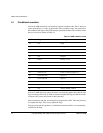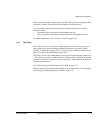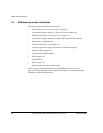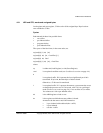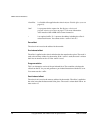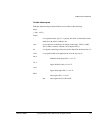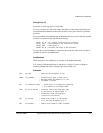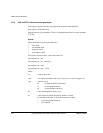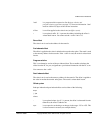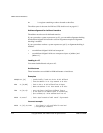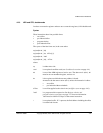
ARM Instruction Reference
4-10 Copyright © 2000, 2001 ARM Limited. All rights reserved. ARM DUI 0068B
Address alignment for word transfers
In most circumstances, you must ensure that addresses for 32-bit transfers are 32-bit
word-aligned.
If your system has a system coprocessor (cp15), you can enable alignment checking.
Non word-aligned 32-bit transfers cause an alignment exception if alignment checking
is enabled.
If your system does not have a system coprocessor (cp15), or alignment checking is
disabled:
• For
STR
, the specified address is rounded down to a multiple of four.
• For
LDR
:
1. The specified address is rounded down to a multiple of four.
2. Four bytes of data are loaded from the resulting address.
3. The loaded data is rotated right by one, two or three bytes according to bits
[1:0] of the address.
For a little-endian memory system, this causes the addressed byte to occupy the
least significant byte of the register.
For a big-endian memory system, it causes the addressed byte to occupy:
— bits[31:24] if bit[0] of the address is 0
— bits[15:8] if bit[0] of the address is 1.
Loading to r15
A load to r15 (the program counter) causes a branch to the instruction at the address
loaded.
Bits[1:0] of the value loaded:
• are ignored in ARM architecture v3 and below
• must be zero in ARM architecture v4.
In ARM architecture v5 and above:
• bits[1:0] of a value loaded to r15 must not have the value
0b10
• if bit[0] of a value loaded to r15 is set, the processor changes to Thumb state.
You cannot use the
B
or
T
suffixes when loading to r15.





